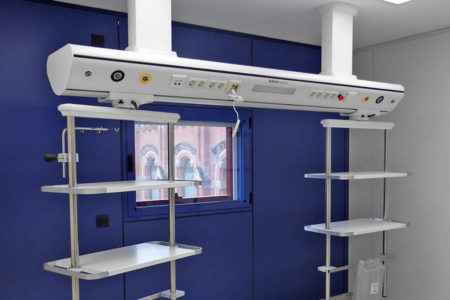The revolution we are experiencing in healthcare, especially in the wake of the pandemic, is the result of improvements in technology and digitization, whether for the design of hospitals, operating theatres, new intervention techniques, patient care…
The commitment to innovation and technology for our well-being
The technology & innovation binomial is behind the paradigm shift in our health and well-being.
Thanks to their mutual understanding, and with hospital engineering, Big Data, IoMT and 5G as a backdrop, we obtain millions of health care data every day, allowing us to reformulate health policies and make informed decisions. And by equipping healthcare workers with better tools, medical and care errors are being reduced like never before.
The use of innovative portable medical devices such as calorie or exercise trackers, oximeters, etc., together with the growth of telemedicine applications and platforms, virtual reality in health, robotic surgery or even artificial organs, represent a before and after in medicine.

The Covid-19 pandemic as a driver of innovation in the health sector
One of the main consequences of the Covid-19 pandemic has been the drive for innovation in healthcare, promoting new and better technologies to tackle any healthcare challenge of this magnitude.
Whether out of obligation, necessity or a desire for cutting-edge innovation in healthcare, the COVID-19 pandemic has highlighted the need for innovative technologies that improve health outcomes, providing rapid solutions even in environments where infrastructure and resources are scarce.
The telemedicine push
New methods and systems for health management and monitoring were catapulted during the collapse of healthcare facilities in the pandemic.
The enormous problems of face-to-face healthcare generated the need to promote telemedicine, an option that has opened up a new landscape of medical care and telematic monitoring. This is the use of ICT (information technology) in remote healthcare, whether to diagnose, monitor or treat the patient.
Videoconferencing, the use of smartphone apps to monitor our health, remote procedures and other telemedicine tools represent significant financial and logistical savings for healthcare systems, facilitating personalised care at any time of day from a single platform. In addition, it reinforces security and the need for real and up-to-date information for patients with complicated health situations.
“Video consultations, digital telemedicine kits and the use of artificial intelligence for diagnosis are a health trend that is here to stay.”

Robotic procedures: greater precision, efficiency and speed
Another of the fastest growing healthcare technology sectors is robotics. Robots have transformed surgery, simplifying times and deliveries or facilitating disinfection, as well as almost completely eliminating human error and allowing real, live interaction.
Some of the portable medical robots are:
- Surgical assisting robots: Help surgeons complete complex micro-procedures without making large incisions.
- Cleaning robots: Disinfect hospitals and their areas.
- Diagnostic robots: Store hundreds of thousands of images to help diagnose disease.
“Thanks to artificial intelligence and 5G, robotic technology has entered the healthcare sector to take a fundamental and necessary step forward in hospitals around the world.”

Robotic intelligence and software advances
Advances in software are one of the mainstays of the increased use of intelligent robotics in hospitals. Proof of this are the Q Panel or Diamond technical panels, which allow centralised control of the operating theatre, or the Hermes software itself, the digital brain to centralise all controls and obtain data and analysis of the operating theatre or critical area.

If you want to know more about our technical panels, critical area control software and the revolution they are part of together with IoMT in the healthcare sector, click here.









